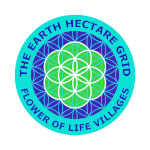Listen to your heart!
Isn’t it important to listen to the heart when you feel you want to do something entirely new? Something we haven’t done before, for which we have to organize ourselves differently? It is not only rational thinking that will get us there. The land and life itself also have a say in it, and probably we should let intuïtion speak to us as wel. Thus for those who would like to take the iniative to begin a hectares village somewhere, it is probably best to start from the heart.
ORIËNTATION
On a practical level, could it be a wise idea to even start an entire hectares-village from the heart as well? And in a similar way? Thus let intuïtion have a say in it, but also make a planning? For example, one needs to know in advance how many hectares of land are available. Is it a relatively small strip of land where the village or settlement will arise? Like between a river and the edge of a forest (even if it has been burned down), where only 30 to 80 hectares fit in? Or is it in the middle of nowhere, where there is much space for expantion?

blossoming apple tree
THE VILLAGE CENTER
A general rule for a hectares village is that it should consist of a maximum of 150 hectares. Once that number is exceeded, other unwanted dynamics come at play, such as the loss of community building due to the vast distances over many acres of land and hectares. But community building is one of the key ingrediënts of flourishing villages!
7% RULE
Please also consider the general rule of the 7% reserved hectare space for the heart of every village. This heart center may occupy a maximum of 7% of the entire village plot.
So with a 100-hectares village, the village center consists of an area of 7 hectares. A village of 150 hectares has a center of 10½ hectares. So a maximum of 140 family domains can be created in one village.
Please take these in your considerations, while creating the living heart first, thus the center, and build family domains from there in all directions.

NEXT LEVEL
Five years ago I started my first website www.margreetotto.net. Its both in English and Dutch language. I had already written a plan about the idea of the Earth Hectare Grid and had send it to a Dutch environmental organisation. No substantive respond. So I decided to publish it on my personal site.
Back then, I had no clue that all the world wide events mentioned in part one of this article would evolve to the huge scale we’re seeing now. Especially the forest fires were relatively small compared to the numbers of burned acres this year (2020, and after that 2021 and 2022). I already knew we had severe flooding and all of that, the changed weather patterns and hurricanes. But those fires? There was a moment somewhere I realized I have to step up and I created this website. But I could not have done so without all the help I’ve got. If that’s you, THANK YOU! You are all dear to my heart.
GUIDING LIGHT
Some say it all adds up and is of biblical proportions now. Thus is this the end of the world then? Well certainly the end of the world as we know it, but for sure not the end of humanity or our planet, although vast losses might occur. I believe. And we have to make sure we keep the faith. But sometimes it seems almost impossible in these turbulent times. It may sound dramatic, but once more, I’m praying for the activation of guiding light in our darkest hours.
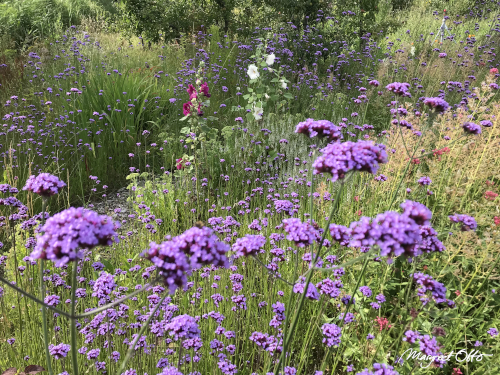
A HECTARE GRID ON INLAND AREAS
We may want to ponder now on the layout of the hectare grid on vast rural areas, such as burned down forests and woods. And does it also apply to desolate areas such as savannas and deserts?
There are regions where people might be able to restore land pretty fast. This might be due to vertile soil, plenty of water year round, and even its historical background and the knowledge of indigenous people.
LIGHT EMANATIONS
Light emanations might flow through those areas such as the rainforests, Central Asia and many inland areas.
RESTORING FORESTS AND WILDLIFE
For the restoration of forests and the habitats for wildlife, rural land and inland areas, the concept of hectares villages can also be used. Logically the ‘villages’ therein aren’t actual villages where humans are going to live, as they have a different purpose. Therefore they can be named differently.

HECTARES CLUSTERS
Instead of ‘hectares villages’, those could be named ‘hectares clusters’. Just as with hectares-villages, hectares-clusters also consist of a maximum of 150 hectares. But the format is further simplified. The hectares-clusters must adhere to the three following simple rules:
- a green ‘living fence’ around every hectare
(consisting of trees and bushes) - a quart hectare forest on every hectare,
(consisting of trees and bushes) - a pond or lake on every hectare.
(and/or an inner and outer ring of canals)
The latter ‘pond or lake’ might be adjusted, because for a hectares-cluster consisting of 150 hectares or less, it is probably sufficient to only create a few lakes per hectares-cluster, but bigger in size. For instance one lake spread over the connecting corners of three or four hectares. One can also use the already existing lakes in rural areas.
CANALS?
In hectare-clusters for forests and wildlife doesn’t need to be infrastucture such as roads, buildings or a powergrid. But there needs to be a structure for watersupply. One might consider to create an inner and outer ring of canals in and around the hectares-cluster (or around every hectare), where a continueous supply of water is available. Can manmade canals be of use here? They might come in handy in very dry areas, such as to channel water into the desert, where lakes won’t form naturally otherwise, or only in the rainy season.

NATURE WILL TAKE OVER
What are the advantages of adhering to the above mentioned three main principles? There are many! When a quart hectare of forest and a living fence are planted on every hectare-unit, the water cycle will return. When maintained well, bushes will grow beneath the trees and grassland will get green again.
With sufficiënt watersupply, the trees will multiply by themseves in a few years time. Returning wildlife will help with this, such as birds and other small animals, by spreading seeds and berries. And for windbloomers all what is needed is sufficiënt water in warm seasons.
Gusts of wind will aid for their propagation by spreading pollen through the air. Thus nature will take over and fill up the remaining free space of the hectare with tree saplings and other green life. Nature will always be reproducing itself under the right conditions.
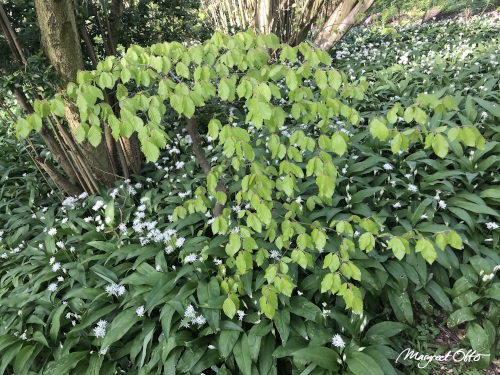
SPONTANEOUS RECOVERY
Spontaneous recovery of nature has already been proven after nucleair fallout of the atomic power plants in some locations, where even wildlife came back and nature flourished beautifully. Obviously nature grows back fast, despite the suffering that such dramatic events have caused for many living organisms.
Unfortunatedly, both humans and animals were affected with radiation sickness. This resulted in having prolongued diminished quality of life for the rest of their lives, sometimes leading to death when severely exposed, or leaving the next generation occuring with birthdefects.

HOPE
But this is different from forests that have burned down to the ground due to forest fires. In these cases there are no -or very little- seeds left for the propagation or reproduction of trees, because the seeds also got burned. There might be still some seeds already deeply rooted in the soil which have thus escaped the intense heat of the fires.
Not sure if it works that way, but there’s always hope. Isn’t it great when there are people out there who collect native seeds for their future land and kindomains? It is, because exceptional situations, such as the worldwide burned vast amounts of forests, need exceptional help. This includes all wildlife that has survived. Many animals might need extra help from us intelligent thoughtful and loving beings in order to survive.

LESS WORK
Also, it is less work for humans to plant a quart hectare forest than to plant an entire hectare forest. Especially when we have to reforest millions probably even up to a billion of lost acres of woods to fires, the number adds up so to speak.
We might want to move mountains in order to give nature a helping hand, but we can only do so to a certain extent and accomplish small hills instead. This is because we have to restore our own habitats too. And the required worldwide reforestation is of such a great magnitude, that most likely more than one next generation has to deal with it. Thus we have to be clever and work in the most efficiënt way, and enable nature itself to take care of the rest.
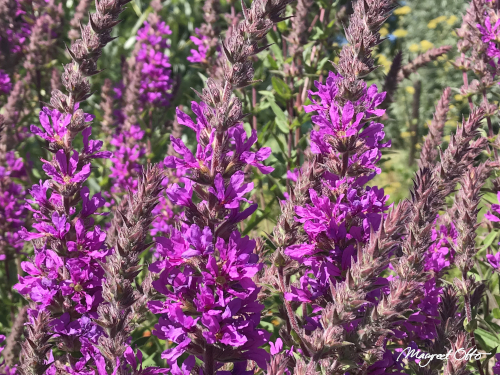
MULTI-TASKING
Logically, when we’re ready with establishing our kindomains, we might want to reforest our nearby areas first. It is an option to work on them simultaneously, as these will provide the area surrounding the village, with lush greenery. This provides oxygen as well, which is also for our own benefit.
Plus it is practical to have areas of reforestation close by, so one can work close to home, and doesn’t need to travel far. Lots of public transportation might have been disabled as well. It is also cost-effective to work from the inside out.
WILDLIFE DOMAINS
With the reforestation through the principle of hectare-clusters, wildlife-domains can be set up in the same manner. Millions of animals need our help right now, those are the ones that escaped the billions that have died. The first necessary items for survival for all animals what comes to mind are: water, food, and shelter.
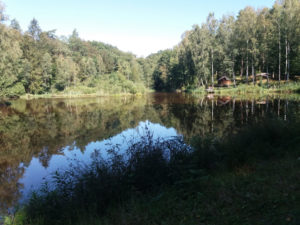
PONDS AND LAKES
For this purpose, the hectare-clusters are also formatted with a maximum of 150 hectare-units. In very dry areas, one might have to dig deeper in order to have acces to water. Or, as stated before, one can create circular inner- and outer canals for continuous watersupply.
Could it work for every wildlife-domain in vast areas, to have just one huge lake per hectare-cluster? Probably this way a system for survival for wildlife can be set up very fast? I can imagine one can work on details later in the years to follow, such as to establish smaller ponds on every hectare.
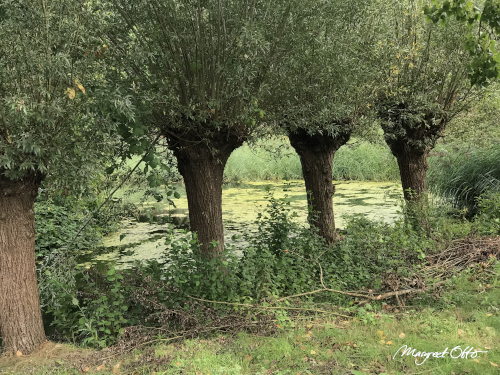
small pool in the Netherlands, due to prolongued draught,
the waterlevel is low and filled with algue
These are just a few ideas from an idealogical mindset though. It is for the people in these areas theirselves how to tackle certain problems, if possible at all. Also one has to work with the means one has, right? It is also important to work in safe manners, especially dealing with deregulated wildlife who have lost their habitat, situations might be dangerous. Needless to say experts in the field can probably decide best.
WATER SOURCES
Severe drought and heat In the southern hemisphere are a problem. What could be solutions for this? Transport of fresh water over long distancs? How will it be done, through gigantic pipelines?
Or digging deep water sources or waterwells? Those might probably give acces to fresh water in deeper layers of the Earth. Who knows, probably 20 story building deep? If that’ll appear to work, a vast area needs to be pointed for this. A location where water naturally collects when there is rain, is where the hand made ponds might reside best.
If this would happen close to every hectare-cluster and every hectare-village, the wildlife (and people) will have direct acces for the most necessary item for survival in these circumstances: Water.

HECTARE UNITS FOR WILDLIFE
The wildlife-domains are simplified also. Every hectare unit in a wildlife-domain, contains a quart hectare of forest, plus the outer ‘living fence’, consisting of trees and bushes, and water wells.
FOOD AND SHELTER
The forest and fence will provide food and shelter for the animals. They can find shade under the green foliage of trees on hot summer days. Óther trees contain edible juicy green leaves, seeds and nuts as well as berries from bushes.
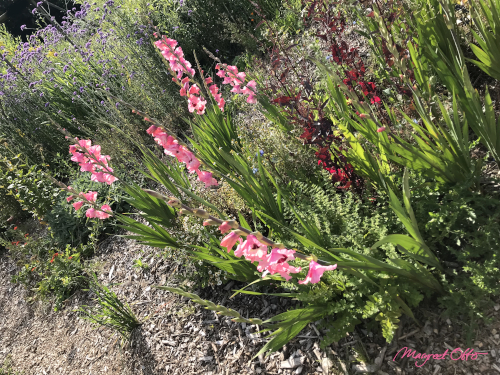
When vast areas of land are set up with hectare-units, green conglomerations grow back, and the ecosystem will naturally evolve back to its natural conditions. The choice for food-producing trees throughout all seasons, specifically aimed at animals which are naturally residing there, and their preferences, is kind of a logic one.
EVERGREEN TREES
One may also consider to set up the living fence with evergreen trees that provide shelter for the animals in winter. These also function as a shield against intense solar radiation in summer, and as a windshield. Its lucious green provides shelter and a place to build nests for birds too. It is also possible to extend a part of the living fence into the quart hectare forest. This can be done together with neighboring hectare units.
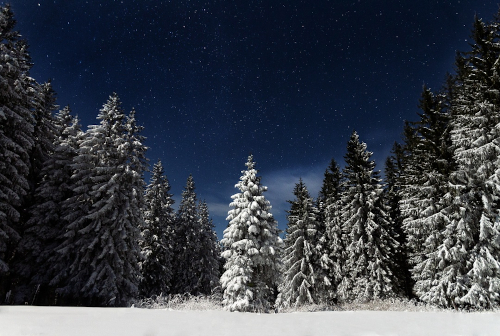
PLASTIC SHEDS
Prior to that, one might also consider setting up simple shelter for wildlife, also for cattle. Here animals can reside under severe weather circumstances such as mentioned above. Since many trees have been burned, there might not be sufficiënt natural material for building sheds.
Would it be an idea to provide temporarily plastic sheds? Those are derived from all the plastic waste that is cleaned and stored. Probably it can be pressed in large blocks which can be stapled.

ENLARGED LEGO
Such as an enlarged lego system. Lets say these legotype of blocks have a size of approximately 1 1/2 meter long and 80 cm wide. These blocks can be made hollow in order to have it partially filled with sand or small rocks, to make them more heavy.
This way the sheds wont be blown away by strong winds. And they can easily be put together, but also broken down and moved. Ofcourse in the long run we want all plastic gone from our eco-systems. Thus this is a temporary solution.
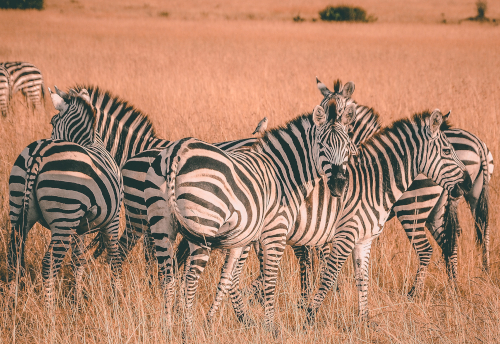
where’s the green?
SAVANNAS AND DESERTS
On savannas for example, could the planting of hectare clusters also enhance regeneration of nature and wildlife? Is it anyway possible to get water overthere? Probably even irrigation systems?
Quart hectares of forest will grow taller by themselves every year, and expand because they have the space to do so for new growth on the remaining ¾-th of every hectare or beyond the outer edges of the hectare-clusters.
The remaining three-quart hectares of every hectare unit, also called the free ground, can be covered with green grasses and meadows for example. These grasses provide food for grazing wildlife and cattle.
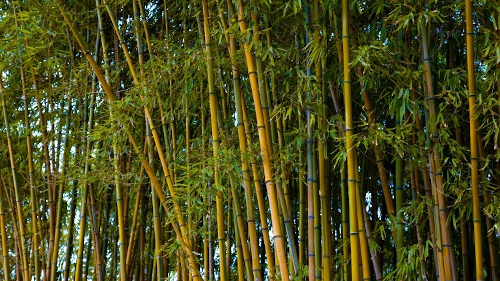
young bambu trees
BAMBU TREES
What type of trees grow well in areas such as savannas and deserts if they get plenty of water? Palm trees, Fruit trees, Coconut trees? What comes to mind also is Bambu trees!
These evergreen perennial flowering plants will immediately impact the water cycle in those areas. Thus they might come to our rescue for hectare-clusters and on wildlife-domains. It’ll instantly green the environment and provide shelter for all wildlife out there.
A part of these Bambu forests can be grown commercially on a larger scale, thus outside hectare villages. Because almost all of its material can be used to make utensils, clothes and objects such as furniture and even houses can be build from them.
We’ve got to think about people in cities too, who have no acces to these materials since they do not manage land themselves. Thus, dig deep for those water wells! Or come up with solutions that do work in the area, and with the possibilities that are available.
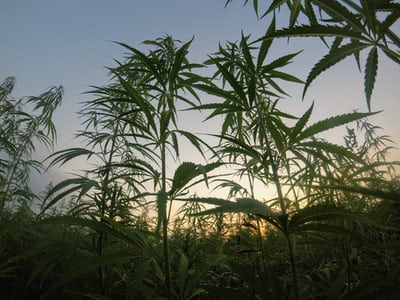
hemp field
HEMP PLANTS
Another miracle plant that comes to mind is the Hemp plant for the mediterranean, but also the northern hemisphere, western- and middle Europe for example. Hemp is an annual plant, its Latin name ‘Cannabis Sativa’. Hemp makes even degraded farmland green and lush again in a brief time. It grows tall for harvest in the summer time. It activates the soil back to the living system that it is supposed to be.
And just as with Bambu trees, the Hemp plant is known for its numerous applications. It is suitable for its vessel production, with which clothes and utensils can be made, and even new houses are build by pressing the vessels of the plant in building blocks. This can be done in a cost-effective way and is environment friendly. Cannabis is also widely known for its medicinal purposes and nutritional value (hemp seeds and oils).

sunflower joy
REGENERATIVE PLANTS
Other regenerative plants that produce harvests easily are for example sunflowers (for oil), hop (for beer), and grains (bread & rice). Also, proteïn rich plants that produce their seeds in the form of beans, are great for the future survival of humanity, such as lentils, chickpeas, beans, and soy. Both animals and humans can be nourished by it. Crop rotation every year or every few years is recommended for many crops. This will keep the soil balanced and more alive.
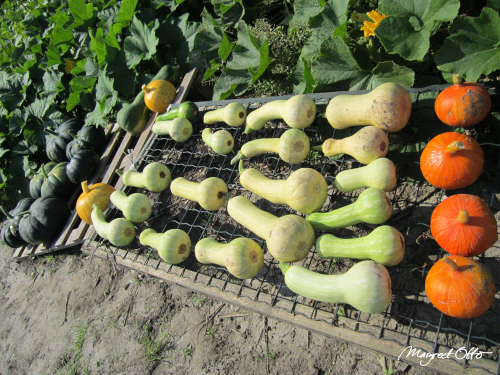
butternut squash harvest
SURVIVAL FOOD
Survival food which can be stored well in winter without electricity for many months are dried beans, grains, fresh potatoes and pumpkins. When kept in cool spaces with good ventilation, such as cellars (no freezing areas), this produce can be kept for four to five months.
Fruits and berries can be made into marmelade and jams, and being stored in glas jars. These were all the natural practices by many farmers and families prior to when our current civilisaton set in. The elderly might want to inform us on how their parents or grandparents used to prepare this! Culinary chefs have the know how too.
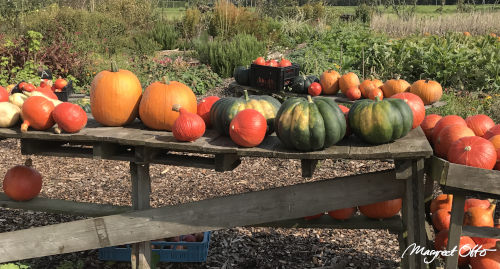
orange and green pumpkins
NO PLOW OR DIG GARDENING
With building new soil, nowadays there are also permaculture techniques to not plow or dig the ground. For the roots of weeds help create better structure in the soil, so that water and oxygen can be uptaken by the plants better.

WINTER WEEDS
And when the winter is ahead in the northern hemisphere, it might even help to plant specific weeds or plants that grow fast in fall and early winter, which aid in making the soil more abundant and alive during winter time, where it’ll nourish the Phoenix in its wintersleep by bringing a bit of sunshine, water and oxygen through the roots into the soil, and thus improve it, making the soil becoming more alive, fertile and ready for new plantings in the spring.
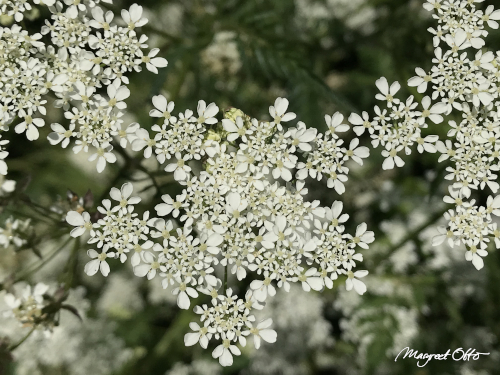
anthriscus sylvestris
SOIL RESTORATION
The winter-weeds will be cut in spring, the ‘chop and drop’ technique, the weeds dry up as straw which nourishes the soil, and new tree saplings can be planted now. These might have grown indoors first (during wintertime) or at a tree sapling nursery.
Once planted on the ground of their final destination, the tree-saplings will losen the soil up even further and expanding their green treetops and crowns evenly, and thus restoring possibly disturbed water cycles. The roots and their tiny hairy capilaries will create more space in the soil, which makes it more oxygen rich and restore the capacity to exchange nutrition from soil to plant and vice versa. You see, it is a living system.
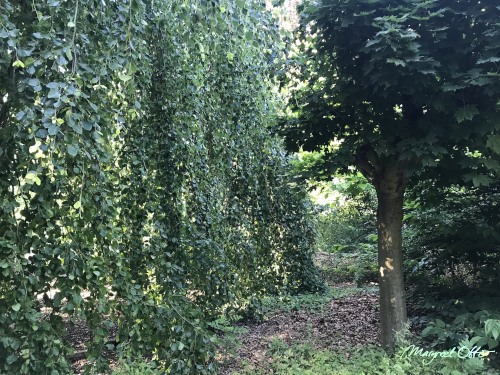
PHOTOSYNTHESIS
This interaction is fueled by photosynthesis which feeds the plants the necessary sugars and nutrients. As we all know, photosynthesis is a proces in the leaves of the plants (and weeds) that converts sunlight and water into nutrition for the plant and soil. Therefore restoration of the soil is dependent on the interaction and exchange of information between heaven and earth.
To know what plants and weeds grow well for the season and area and climatzone that you’re in, you might want to look for information about such farming practises, such as permaculture, or an organisation such as Ecosystem Restorarion Camps.
QUANTUM LEAP -1- WORLDWIDE
QUANTUM LEAP -2- REBUILDING THE LAND
Next:
QUANTUM LEAP -3- THE HECTARE VILLAGE
QUANTUM LEAP -4- CREATING YOUR HECTARE
QUANTUM LEAP -5- FOR THE LOVE AND THE LIGHT
